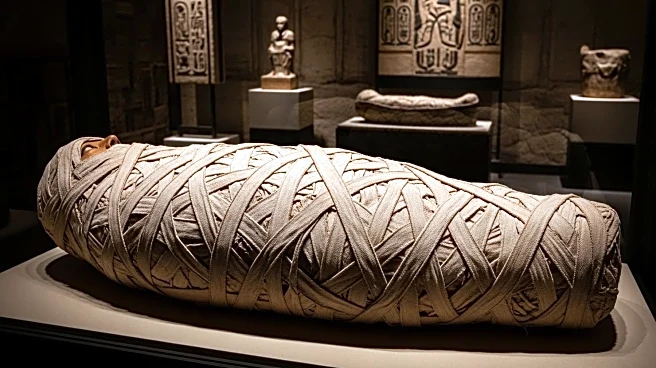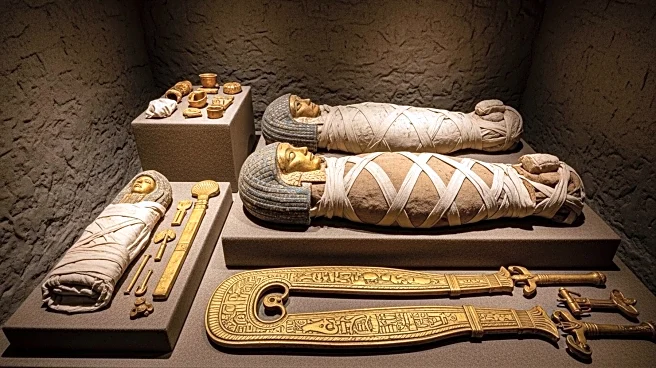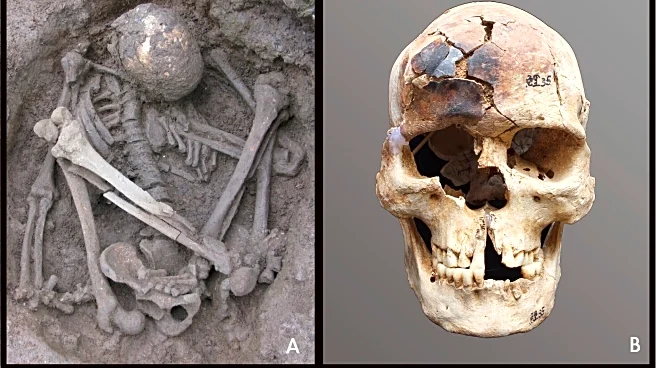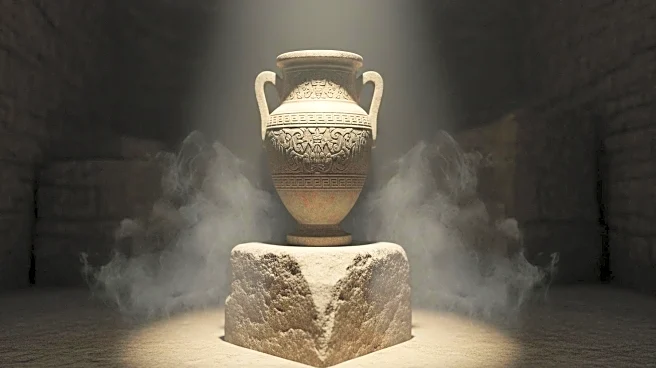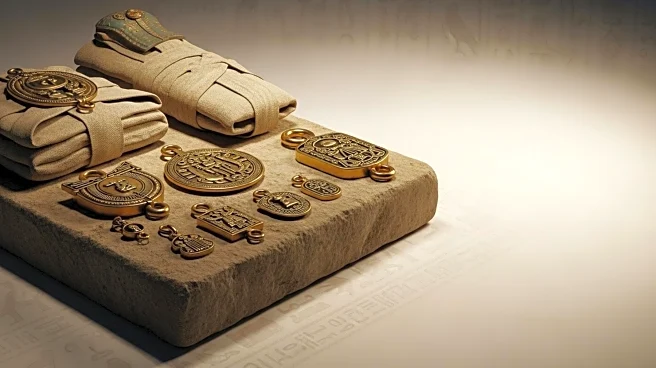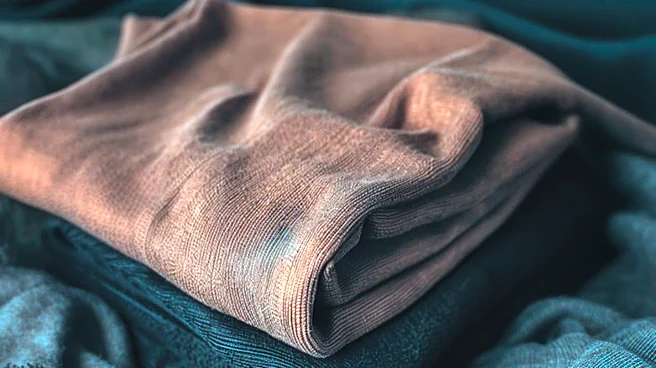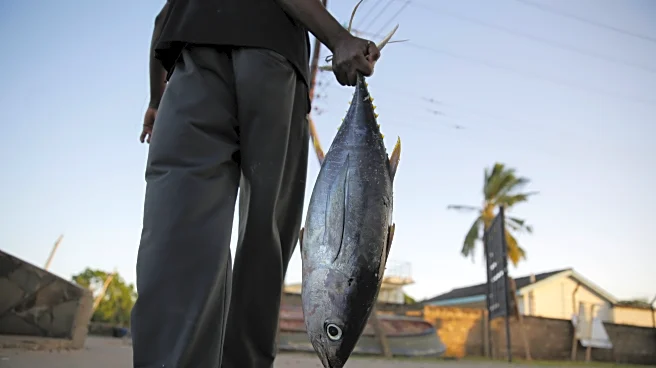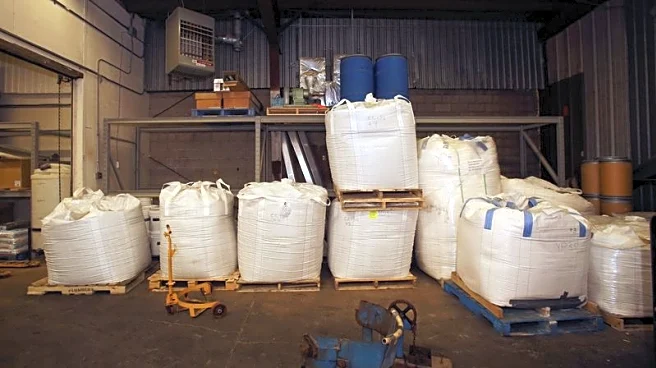What is the story about?
What's Happening?
A new study has uncovered the oldest known evidence of human mummification, dating back up to 14,000 years, in parts of ancient Asia. Researchers found that hunter-gatherers in regions such as China, Vietnam, and Indonesia used smoke-drying techniques to preserve their dead. This method involved exposing bodies to low heat over extended periods, resulting in mummification. The study, published in the journal PNAS, analyzed 54 crouching burials from 11 archaeological sites, revealing that these ancient practices predate the Chinchorro culture of Chile and ancient Egypt. The findings suggest that these societies had complex systems for dealing with the deceased, reflecting sophisticated beliefs about the afterlife.
Why It's Important?
The discovery pushes back the timeline of mummification practices by thousands of years, indicating that such techniques were not exclusive to ancient Egypt or Chile. This challenges existing narratives about the origins and spread of mummification, suggesting a more widespread and ancient tradition. The findings also highlight the cultural and spiritual significance of these practices, as they allowed ancient societies to maintain connections with their ancestors. This research provides a deeper understanding of the cultural evolution of early human societies and their mortuary practices, offering new perspectives on the development of human civilization.
AI Generated Content
Do you find this article useful?
